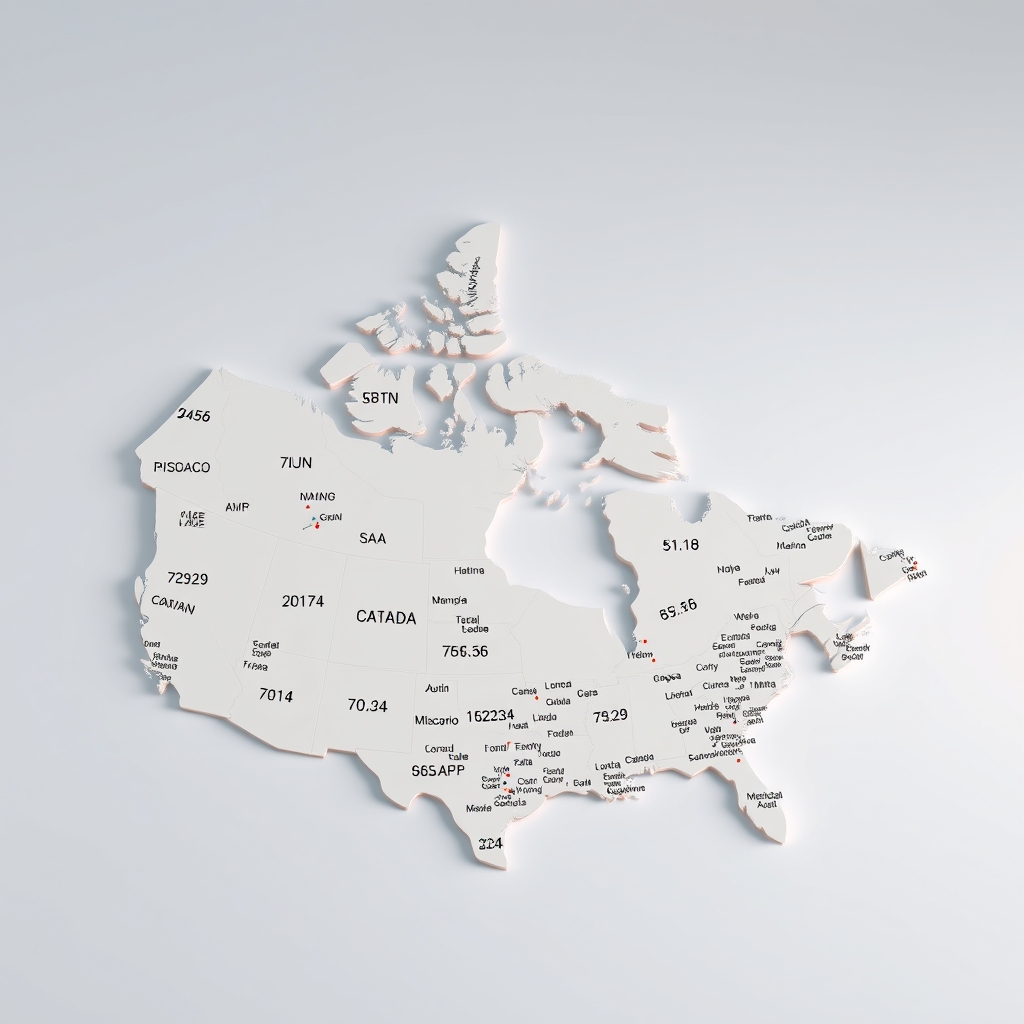Postal Code Data API vs Canada Postal Codes API: What to Choose?

US Postal Code Data API and the Canada Postal Codes API. Both APIs provide valuable postal code information, but they cater to different geographical regions and use cases. We will explore their features, performance, scalability, and provide recommendations based on specific scenarios.
Overview of Both APIs
US Postal Code Data API is designed to provide accurate and standardized ZIP code data for the United States. It enables developers to perform location-based searches, geocoding, and access demographic information. This API is essential for applications that require precise ZIP code data for mail delivery, location services, and demographic analysis.
Canada Postal Codes API offers programmatic access to the complete set of postal codes in Canada. It returns detailed information about each postal code, including geographic coordinates, city, province, and more. This API is particularly useful for address validation, geolocation, and data analysis in Canadian contexts.
Feature Comparison
US Postal Code Data API Features
US Postal Code Data API is its ability to retrieve detailed ZIP code information. To use this feature, developers must specify a valid USA ZIP code in the request parameter. The API returns comprehensive data, including geographic coordinates, city, state, county, and more.
{
"zip_code": "90210",
"city": "Beverly Hills",
"state": "CA",
"county": "Los Angeles",
"latitude": 34.0901,
"longitude": -118.4065
}
Canada Postal Codes API Features
Canada Postal Codes API provides a feature called "Get Canada info." This feature allows developers to retrieve detailed information about Canadian postal codes by simply running the endpoint. The response includes fields such as street name, city, province, latitude, longitude, type, postcode, and confidentiality number.
[
{
"id": 1,
"City": "EDMONTON",
"Type": "HWY",
"Unit": "",
"Count": "1",
"aType": "NonRES",
"Number": "408",
"Street": "28a HWY",
"Latitude": "53.840313",
"PostCode": "T0A0H0",
"Province": "AB",
"Direction": "",
"Longitude": "-113.321822",
"Confidence": "0.7",
"Street Name": "28A"
}
]
Example Use Cases for Each API
Use Cases for US Postal Code Data API
US Postal Code Data API can be utilized in various applications, including:
- Location-Based Services: Applications that provide services based on user location can leverage ZIP code data to offer personalized experiences.
- Demographic Analysis: Businesses can analyze customer demographics based on ZIP code data to tailor marketing strategies.
- Distance Calculation: Applications that require distance calculations between two ZIP codes can use the geographic coordinates provided by the API.
Use Cases for Canada Postal Codes API
Canada Postal Codes API is ideal for:
- Address Validation: Businesses can ensure that customer addresses are valid and complete before processing orders.
- Geolocation Services: Mapping applications can use postal code data to display locations accurately on maps.
- Market Segmentation: Companies can analyze customer data based on postal codes to identify target markets and optimize marketing efforts.
Performance and Scalability Analysis
US Postal Code Data API is optimized for quick responses, allowing developers to retrieve ZIP code information efficiently. Its performance is particularly beneficial for applications that require real-time data access.
Canada Postal Codes API is built to scale, ensuring that developers can access postal code data without experiencing latency issues. This scalability is crucial for applications that may experience sudden spikes in traffic, such as during promotional events or holiday seasons.
Pros and Cons of Each API
US Postal Code Data API
Pros:
- Comprehensive ZIP code data with geographic coordinates.
- Fast response times suitable for real-time applications.
- Easy integration with various programming languages.
Cons:
- Limited to US ZIP codes, which may not be suitable for applications with international needs.
- Data accuracy may vary based on the source of ZIP code information.
Canada Postal Codes API
Pros:
- Access to complete postal code data for Canada, including additional fields like street names.
- High accuracy due to data sourced from official Canadian postal services.
- Flexible data requests that can be customized based on user needs.
Cons:
- Limited to Canadian postal codes, which may not be suitable for applications targeting US users.
- Potentially slower response times during peak usage periods.
Final Recommendation
US Postal Code Data API and the Canada Postal Codes API ultimately depends on the geographical focus of your application and the specific features you require.
US Postal Code Data API is the better choice.
Canada Postal Codes API will be more suitable.
US Postal Code Data API? View the integration guide for step-by-step instructions.
Canada Postal Codes API integration? Read our technical guides for implementation tips.





